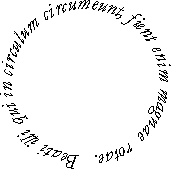This part of the website is an English translation of the definitive hurdy-gurdy
reference book Die Drehleier (The Hurdy-gurdy), written by Marianne Bröcker.
For general information about this translation please see the Index
Page.
This material is covered by copyright and may not be used without permission.
Please see the Index Page for more information about
distribution.
Title Page and Table of Contents
Chapter 1: Introduction
Chapter 2: Wheel and Drone
A. The Hurdy-gurdy Wheel
B. The Wheel as an Infinite Bow
C. Producing an Enduring Tone with Wind Instruments
D. The Enduring Tone and the Drone
E. The Wheel and Hurdy-gurdy in the Middle East
F. The Application of the Wheel in the Middle East
G. The Hurdy-gurdy's Path to Europe
H. The Earliest Representations of the Hurdy-gurdy
I. Medieval Drone Practices in Europe
J. The Hurdy-gurdy's Drone Strings
K. The Trompette String
L. Re-tuning and Removing the Drone Strings
Chapter 3: The Keys
A. The Origin of the Keys
B. The Rotating Keys
C. Hurdy-gurdies Without Keys
D. Pull Keys
E. Push Keys
F. Sliding Keys
G. Key Mechanisms and Tonal Range
Chapter 4: The Forms of the Body
A. The Guitar or Figure-Eight Form and its Variations
B. Hurdy-gurdies With Two- or Three-Part Crank Ends
C. Uncommon Shapes
D. The "Vielle en luth"
Chapter 5: Curious Developments
A. The Nyckelharpa
B. The Organized Hurdy-gurdy and other 18th and 19th Century Curiosities
C. The Streichklavier
Chapter 6: The Names of the Hurdy-gurdy
A. Organistrum
B. Symphonia
C. Is "Armonie" a Symphonie ?
D. Gaita
E. Hurdy-gurdy
F. Vielle
G. Leier
Chapter 7: The Uses of the Hurdy-gurdy in the Middle
Ages
A. Its Position in the Medieval Instrumentarium
B. The Tuning of the Hurdy-gurdy
C. Early Polyphony and Instrumental Practice
D. The Hurdy-gurdy in Church Music
E. The Hurdy-gurdy in Medieval Secular Music
Chapter 8: The Modern Repertoire
A. The Use of the Hurdy-gurdy in Modern Times
B. The Hurdy-gurdy Compositions Which Have Been Preserved
C. The French Hurdy-gurdy Methods
D. The After-effects of the Hurdy-gurdy Vogue
E. The Use of the Hurdy-gurdy in Recent Times
Chapter 9: The Social Position of the Hurdy-gurdy
A. The Judgement of the Sound of the Hurdy-gurdy
B. The Varying Image of the Hurdy-gurdy
C. The Hurdy-gurdy as a Church Instrument
D. The Instrument of the Minstrels
E. The Hurdy-gurdy of the Beggars
F. Women and the Hurdy-gurdy
G. The Fashionable Instrument of the French Aristocracy
H. The Hurdy-gurdy as a Folk Music Instrument
Chapter 10: Final Remarks
Supplemental chapters
Chapter 11: Notes on Building and Playing Technique
Chapter 12: More on the Position and Construction
Chapter 13: Additions to the Story of the Hurdy-gurdy
Chapter 14: Brief Final Remarks
References
Music sources
Illustration sources
Musical references
Bibliographical references
Museum catalogs
Name index
Subject index
Illustrations
Musical examples
 Please
contact us if you have comments or questions about
this page or other pages on this site.
Please
contact us if you have comments or questions about
this page or other pages on this site.